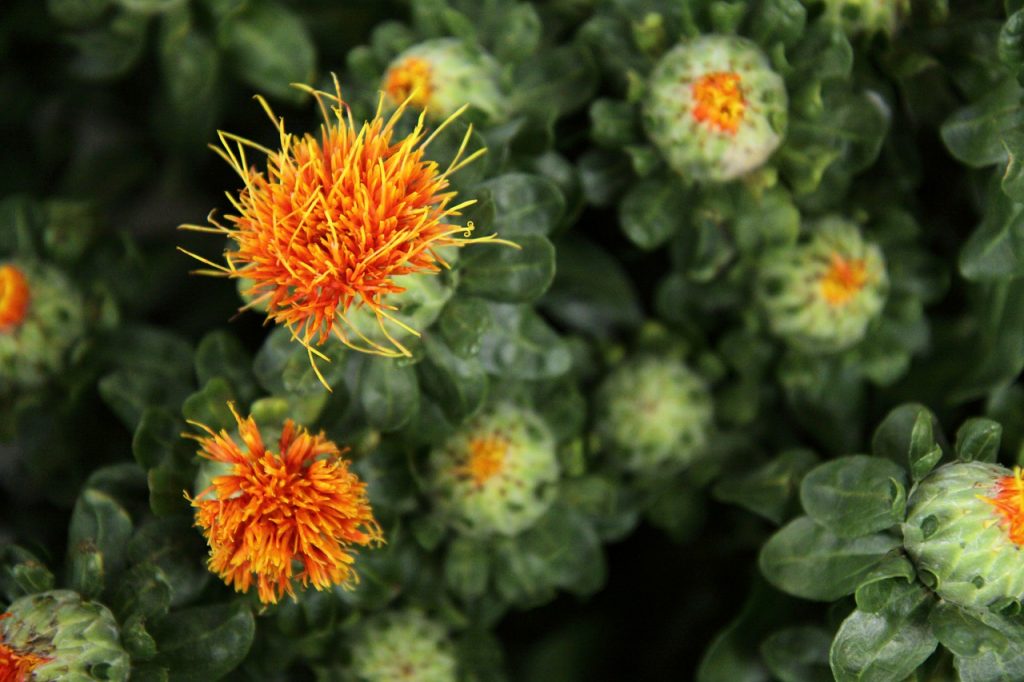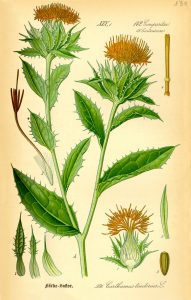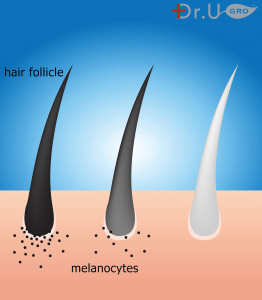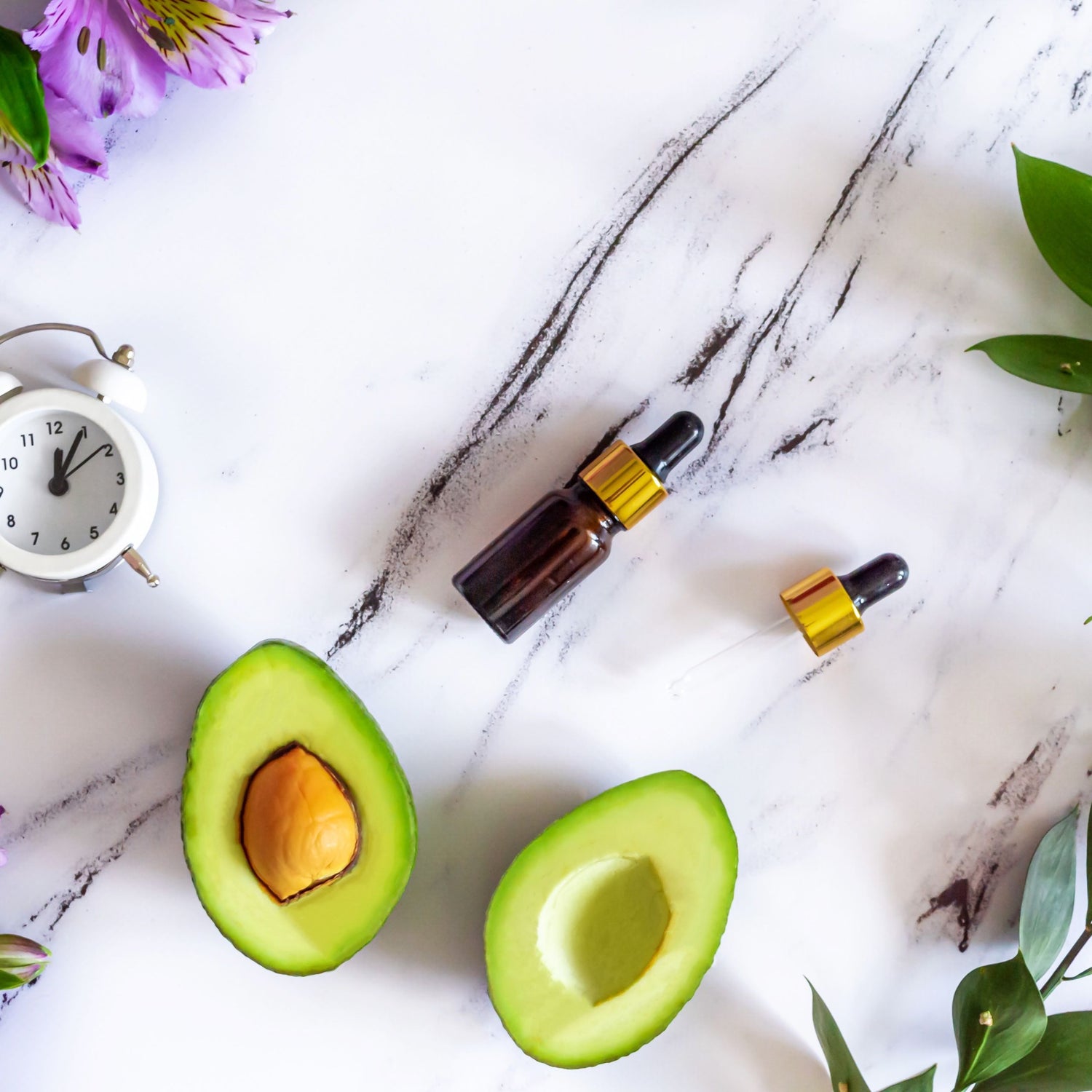What is Carthamus Tinctorius?
Widely known by its common name as Safflower, is a branched plant with thistle-like petals. Safflower's use in home remedies for hair growth has historical roots. The plant has been used as a potion for hair growth in ancient times. In the past, however, no scientific evidence has supported the idea of Carthamus tinctorius serving as a source of hair restoration. This is why recent studies surrounding safflower floret extract for hair growth are fascinating. The observed effects of safflower floret extract on hair are summarized in this article.

About Carthamus Tinctorius Floret Extract
The Safflower plant is thistle-like and tall. The branched plants are anywhere from 12 to 59 inches high. They can have yellow, orange, and red flowers. Every branch on the Carthamus Tinctorius has flowers. Each flower, in turn, can have anywhere from 15 to 20 seeds embedded. The essential oil of this plant comes from these seeds. However, the extract examined in the following studies examines the extract from the floret (i.e., flower) itself. The studies below examine whether safflower floret extract benefits hair in several ways. This includes observing the mechanisms at work within the plant extract and its role, if any, in hair growth (2, 3, 4, 6). Additionally, some studies also examine the possibility of using safflower floret extract for hair loss due to androgenic alopecia (1, 7).

Using Safflower Floret Extract for Hair Growth in Mice
The Carthamus tinctorius plant has an established role in ancient rituals.
Two experiments conducted by J. Junlatat and B. Sripanidkulchai revealed the positive effects that Safflower has on hair growth in mice (3, 4). In one study, researchers isolated mice hair follicles and cultured them with Carthamus tinctorius extract (CTE). The results were suppression of TGF-beta1. TGF-beta1 is a polypeptide that causes cells to transform. This protein, nicknamed the "hair follicle assassin," regulates cell proliferation and death. It leads to hair loss in men by promoting the inflammation that leads to the follicle's miniaturization. Researchers noted that cultured mice hair was significantly longer by the end of this experiment (3, 4). These findings seem to support, in effect, the conception that safflower floret extract benefits hair. Research published in the Journal of Ethnopharmacology supported such a claim by testing 17 Thai plants traditionally used for hair restoration (6). All vegetation was dried, ground, and extracted with ethyl alcohol. Carthamus tinctorius extract proved the most potent 5α-reductase inhibitor. Phyllanthus Emblica was the second most potent inhibitor, while Rhinacanthus Nasutus Kurz. was the least potent 5α-reductase inhibitor. This enzyme is responsible for converting testosterone into its androgen byproduct, dihydrotestosterone (DHT). DHT is widely known as the main instigator of male pattern balding.
Safflower Floret Extract Hair Benefits: Research of Reversing De-Pigmentation and Alopecia
Hair turns grey when melanocytes, the cells responsible for hair pigmentation, become damaged over time.
Some research has presented the idea of safflower hair restoration extending beyond hair growth and into the field of reversing the effects of alopecia. In a study published in the Archives of Dermatology, Ziboh, a 19-year-old man, applied safflower floret extract in hopes of treating another condition (7). He discovered that the formula reversed the effects of scalp dermatitis, alopecia, and depigmentation of hair. A study published in the Journal of Pharmaceutical Sciences supported the idea of safflower floret extract reducing the likelihood of premature grayness (5). According to their research, CTE brings an increase in melanin levels that affects melanogenesis in B16F10. Such effects ultimately ward off gray hairs. H. Bö hles, M.A Bieber MA, W.C. Heird's study on CTE and its reversal effects on rats further support the idea of safflower floret extract having more than hair restoration abilities (1). Researchers gave 185mg of safflower floret extract to rats with an essential fatty acid (EFA) deficiency for 15 days. The result was evidence of the biochemical manifestations of EFA being reversed. EFA deficiency has been linked to sources of negative hair health conditions such as dandruff, brittle hair, and poor blood circulation to the scalp.
A Few Precautions
While Carthamus Tinctorius extract hair growth is promising according to the studies above, further research is needed to determine the effectiveness and safety of long-term use on humans. It is important to note that the research studies above include testing on mice. Also important to note is that the daily dosage of safflower floret extract for hair is 50mg (2). This amount is a recommendation from the European Food Safety Authority. Individuals suffering from hair loss should seek the assistance of a dermatologist before attempting any natural remedies at home. Only a physician can determine the best path to take in your hair restoration journey.
Safety Profile
The Environmental Working Group shared its data regarding safflower floret extract and its potential safety hazards. The organization scored this ingredient a one on its ten-point scale, indicating little to no concerns. It ranked low in all of its safety criteria, including tests on cancer promotion, developmental and reproductive toxicity, and allergies.
Frequently Asked Questions - Safflower Floret Extract
What are the effects of safflower floret extract on hair?
Safflower floret extract has been observed to suppress the TGF-1 beta protein in mice (3, 4). This is a protein linked to hair loss in men. Furthermore, safflower floret extract was determined to be a 5α-reductase inhibitor. This enzyme is known to be responsible for the conversion of testosterone into dihydrotestosterone (DHT). This androgen molecule is responsible for the miniaturization of hair follicles in androgenic alopecia (6). Other naturally occurring substances, such as eugenol, have also been linked to inhibiting this enzyme. Research has also observed how safflower floret extract benefits hair to prevent hair from greying (5, 7).
Are there any approved uses of Carthamus tinctorius flower extract for hair?
The European Food Safety Authority addressed the scientific basis for using Carthamus tinctorius floret extract for hair and skincare (2). A panel recommended capping the daily dosage at 50mg for this use (2). They did not endorse or disapprove of a cause-and-effect relationship. Oral dosage of natural sources, in general, can have side effects. Using topical products can help avoid this.
References
- Böhles H, Bieber MA, Heird WC. Reversal of experimental essential fatty acid deficiency by cutaneous administration of safflower oil. Am J Clin Nutr 1976;29:398-401.
- Europeana Food Safety Authority Panel on Dietetic Products, Nutrition, and Allergies. Scientific Opinion on the substantiation of health claims related to Carthamus tinctorius L. and maintenance of skin (ID 2748) and maintenance of hair (ID 4242) pursuant to Article 13(1) of Regulation (EC) No 1924/2006. EFSA Journal 2009;7(9):1284.
- Junlatat J, Sripanidkulchai B. Hair growth-promoting effect of Carthamus tinctorius floret extract. Phytother Res 2013 Dec 11. DOI: 10.1002/ptr.5100. [Epub ahead of print]
- Junlatat J, Sripanidkulchai B. Hair growth promotion, cytotoxicity and skin permeability evaluations of Carthamus tinctorius floret extract. Isan Journal of Pharmaceutical Sciences 2013;9(1):221.
- Junlatat J, Sripanidkulchai B. Stimulation of melanogenesis by Carthamus tinctorius floret extract in B16F10 murine melanoma cells. Isan Journal of Pharmaceutical Sciences 2013;9(1):221.
- Kumar N, Rungseevijitprapa W, Narkkhong NA, et al. 5α-reductase inhibition and hair growth promotion of some Thai plants traditionally used for hair treatment. J Ethnopharmacol 2012;139(3):765-71.
- Skolnik P, Eaglstein WH, Ziboh VA. Human essential fatty acid deficiency: treatment by topical application of linoleic acid. Arch Dermatol 113(7):939-41.
- Sanusi Umar, Marissa J. Carter, "A Multimodal Hair-Loss Treatment Strategy Using a New Topical Phytoactive Formulation: A Report of Five Cases," Case Reports in Dermatological Medicine, vol. 2021, Article ID 6659943, 12 pages.






